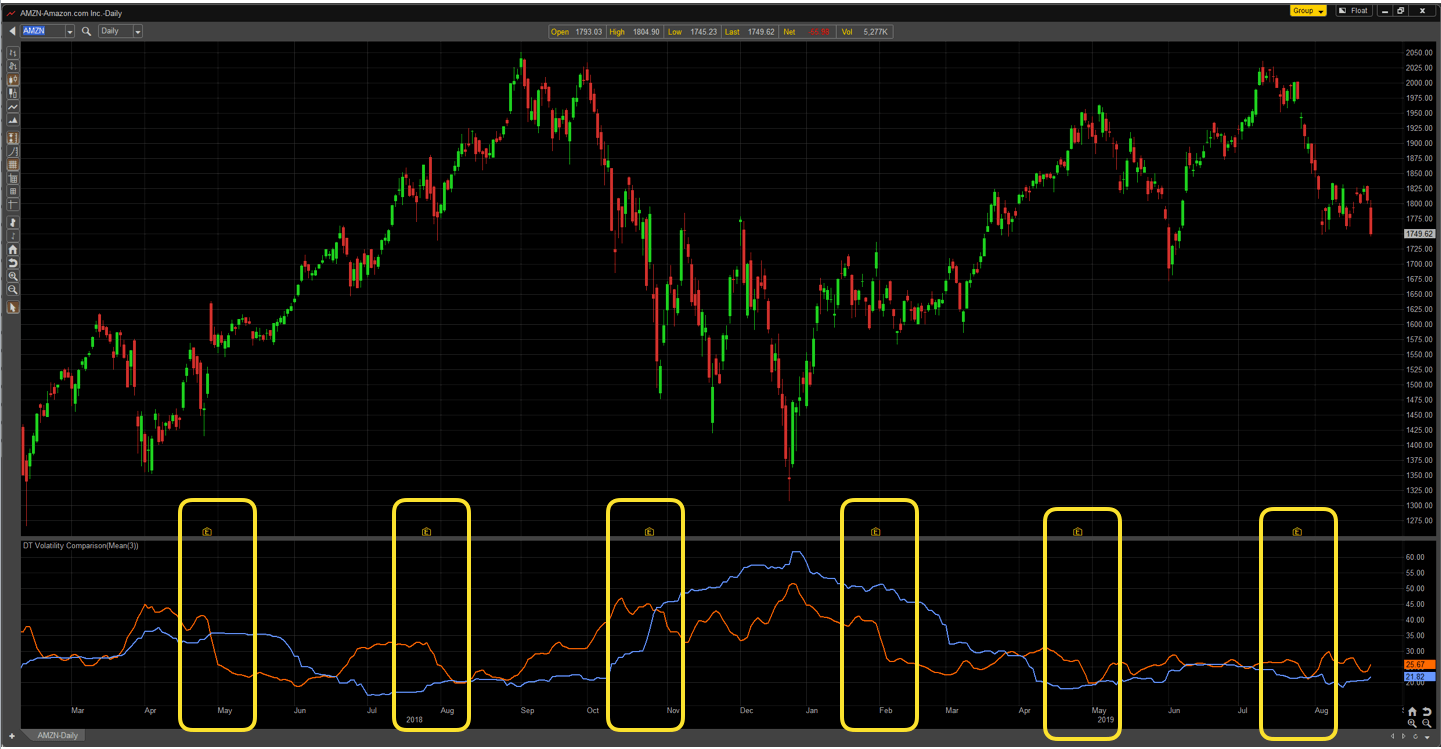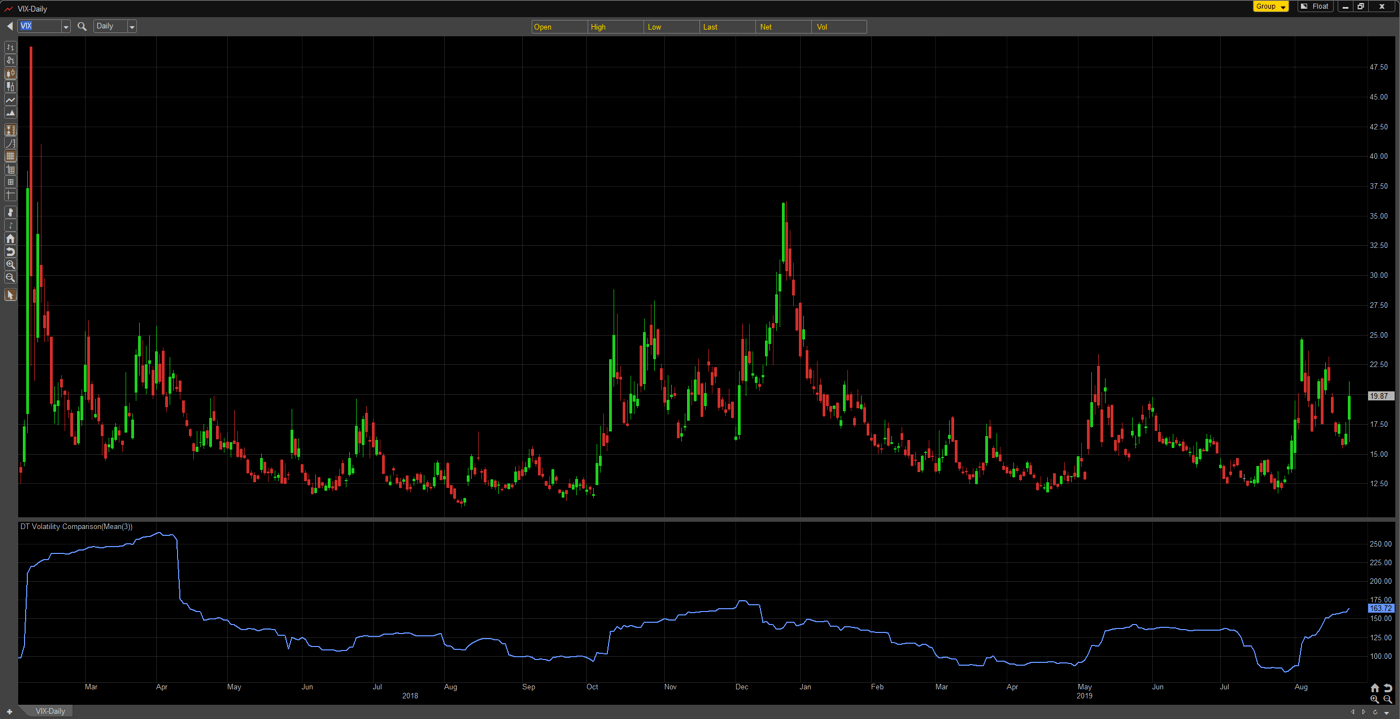Imagine you are sitting at your computer looking over your stock portfolio and as you sit there, you check on the progress of your 1,000 shares of AMZN. A reminder goes off on your phone that AMZN earnings are coming up in a couple of days, and the rumors on the street suggest AMZN will miss big. You decide it's a wise idea to buy insurance against this potential downtrend in the form of a put option. If AMZN continues higher, you keep the shares. If AMZN gaps down, you exercise the put, which gives you the right to sell your 1,000 shares to whoever sold you the option. The best part is moving the shares and doing it at a substantially higher value than AMZN's current price.
Now, imagine you are the person on the other side of this trade. You get the bright idea that you want to sell a put option, which creates an obligation for you to purchase shares at a premium price if the option is exercised. Here is where implied volatility rears its head. Implied volatility is a measurement of the amount of fluff built into the price of an option. The higher the implied volatility, the higher the cost of the option.
Look at the orange line on this chart for AMZN's implied volatility and pay close attention to the spikes right at earnings.

Remember:
- If Implied Volatility is increasing, the price of an option is increasing.
- If Implied Volatility is decreasing, the price of an option is decreasing.
In the example above, it was an earnings event that created market uncertainty. The recent selloff of the market also created uncertainty. Just like earnings increased implied volatility, so did the selloff. If we wanted to look at the average implied volatility of the entire S&P 500, we would pull up the VIX. VIX displays the average implied volatility of all the stocks in the S&P500 index, as seen in the chart below.

In this example, the average implied volatility is relatively high, but what matters is how this impacts your trades, measured by vega. Vega is the measurement of implied volatility's impact on your options. The impact to an option is measured by each 1% move of implied volatility. Therefore, if you have a vega of 0.20 and implied volatility moves 1%, then your option value will move $0.20.
There is absolutely a scenario where you might buy a call option, watch the trade go in the direction you desired, and still lose money. If this happens to you, the culprit is likely implied volatility and vega. However, this scenario can be avoided by following a few helpful hints.
- Consider Selling options when implied volatility is high. Reminder, selling naked puts and calls are a risky strategy.
- A variation on selling options that's a little less risky is to trade credit spreads. This is essentially a hedged selling strategy.
- Double-check the implied volatility and vega of your stock before you place the trade
- Avoid options altogether and trade stocks.
In closing, always make sure you are aware of implied Volatility and its potential impact on your trade before you execute the order. Remember, if implied Volatility is increasing, the price of an option is increasing, and the flip side is true if implied volatility is decreasing, the price of an option decreases.
